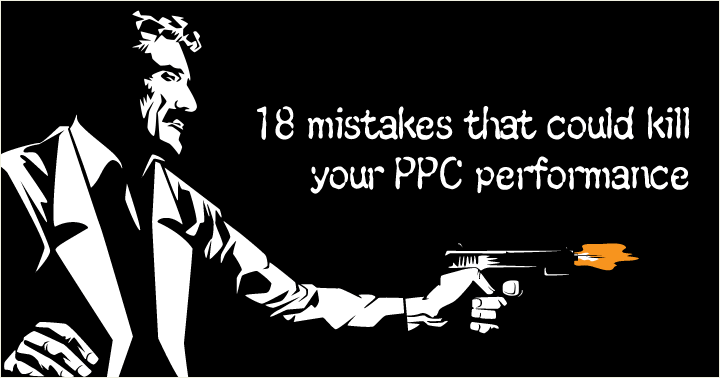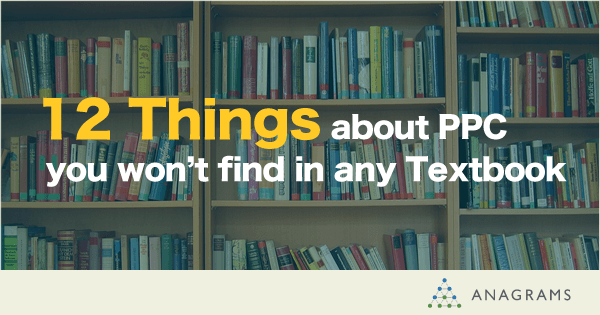
One reason why PPC has been able to evolve to the present state is because of all the flexible ways of targeting your audience. For better or worse, it’s pretty much possible to only show ads to desired users, and that’s also why PPC has become very cost-effective. Or to be even more precise: that’s why it became very easy to cut down unnecessary ad spend. Let’s take a deeper look at what targeting is about and how it’s done.
※This is a translation of the this article.
目次
Think of everything as “People”
When we say “only showing ads to desired users”, then what kind of people are we actually talking about here? That’s what you have to think about first before you can get into the different targeting methods.
I get the impression that often targeting is approached from the standpoint of products and services rather than people. But when you haven’t got any specific idea on what kind of people you are marketing to, how are you supposed to know who you should be targeting then? Without thinking in this direction, PPC tends to become a tool that’s only used for its own sake, and that will change your game for worse.
First and foremost, think about whose problems your products and services provide a solution to, and what kind of people actually would be willing to pay for them as well. That should be the starting point of everything.
Besides, if you couldn’t imagine these certain “people” even after thoroughly scrutinizing your website, then chances are they probably won’t exist in reality either. In such a case, get rid of hurdles that make purchasing too much of a hassle, rewrite your texts into something more convincing, or if possible even drastically change the product itself until you are sure that it’s something people would actually want to use.
Targeting means cutting out
Since we only want to show ads to desired users, the next step after you have grasped an idea of them, is to think about which targeting methods are the most suitable.
Pretty much like:
- “The Keywords A, B and C seem relevant for my Search Ads…”
- “Contextual Keywords X, Y, etc. could work well in Google Display Network (GDN) campaigns, because my target audience visits websites with matching content…”
And so on.
When it comes to targeting, I always have a certain idea on my mind. Let’s have a look at the following tweet:
書くことはなにか付け足すことだと考えている人が多いが、逆なんです。書くことは捨てることであり、削ることなんです。それは文章を推敲して短くする、なんて話ではなく、もっと根源的な話。真っ白な原稿用紙は茫漠とした大海なのに、たとえば「尾道、夜。」とたった三文字書くだけで世界は削られる。
— 田中泰延 (@hironobutnk) June 16, 2010
Most people think of writing as “adding things”, but it’s actually the opposite.
Writing means cutting off and throwing away. And I’m not talking about editing and shortening your text. I mean it in a far more fundamental sense. A blank page can be like a vast ocean, but the moment you write the three words “Onomichi at night”, the world shrinks down to a tiny size.
This is pretty close to what I think targeting in PPC is about. Using targeting methods to cut out the desired user type from the online world. In my book, targeting is cutting out.
I’ll give you an example.
Let’s say you’re managing a campaign for diet products. It should be easy to imagine that you could target your audience by using “diet” as a keyword for your search ads. But that’s just one approach of many. How’s the following? Using keywords like “low carb diet” for search, and “raw food recipes” and “BMI calculator” for contextual targeting in the GDN. Don’t you think that this somewhat sums up what kind of user we could be marketing to?
I assume that you are managing an account with several different keywords, so there should be many possible ways of “cutting out” like in the example above. And no matter whether it’s Paid Search or the GDN we’re talking about, each has its own qualities, therefore it’s very important to think about which “cutting tool” (targeting method) to use when trying to appeal to a certain audience. And PPC isn’t almighty – sometimes Facebook Ads or even offline advertising in trade journals or via direct mail can be the better choice to properly reach the users you want. If you want to be called an excellent advertising professional that is also able to precisely pinpoint specific audiences, you have to know your tools very well, since all of them have their respective strengths and shortcomings
Check for Logical Flaws
Alright, you know your audience, you thought about targeting, then you should be ready to go, right? Hold on for a second, there’s still one thing left to do before you can start. Remember math class when you verified your results afterwards to prove your calculation had been correct? In PPC you can basically do the same, and that will have a significant impact on your outcome.
It is done as follows:
When planning your targeting, think of “people” first and then which approach could be working to reach them.
People → Targeting
Then do the exact opposite: Look at your targeting method of choice and reflect on what kind of “people” you are most likely to reach with it.
Targeting → People
By doing so, you’ll find out whether or not there are any incoherencies between your “people” and your “targeting”. Sounds a bit too abstract? Here’s an example:
Let’s say you’re doing PPC for a company that sells used cars. It’ll be fairly easy to imagine that a lot of potential customer’s searches might be “used cars”. In this case we could target them with search ads by using “used cars” as one of our keywords. And that’s where our verification routine comes in. Ask yourself: What kind of people would possibly type in “used cars”? Now that you think about it, it’s not necessarily only those who would like to “buy” a used car, but also those who might want to “sell” theirs. When you are able to spot such logical gaps between your “people” and your “targeting” right in the beginning, then you could build up a solid defensive line by, for instance, pre-emptively lowering your bids, or adding negatives like “sell” or “valuation” in case your keyword is set to broad match. Therefore, checking everything like this lets you apply the correct measures that make your campaigns more effective than they would otherwise have been.
And while changing bids or adding negatives still could be done when your campaigns are already running, bigger flaws would require you to completely rethink your targeting. So be especially careful when it comes to contextual keywords, because they are very prone to expand to an unnecessarily large audience.
Visualize your Concept
When planning your targeting, it can be helpful to draw a Venn diagram. This also applies to the aforementioned checking for logical mistakes. Try to imagine “People” and “Targeting” as circles and think about how they are related to each other. There are three points to keep in mind when creating a Venn diagram: Size, Opacity and Degree of Overlap.
Let me explain one after another.
1. Size.
The size of the circle equals its volume. (Impressions ≈ Audience Size)
2. Opacity.
The higher the opacity, the higher the Conversion Rate. It indicates a user’s motivation for a purchase, and the probability for such a user to actually be in a certain audience.
3. Degree of Overlap
This will show in which way the circles for “People” and “Targeting” are related to each other.
Now let’s create one Venn diagram based on our previous “used cars” example. If “People” refers to “people that want to buy a used car”, and “Targeting” to the broad match keyword “used cars”, it will look something like this:

The term “used cars” covers a lot of possible intentions, therefore our circle will be less opaque. And since the Conversion Rate would be accordingly low, it would be reasonable to avoid getting too crazy with our bids. The circle for “Targeting” is bigger than the one for “People”, so there is a certain overlap, but yet not to full extent. This means the area that’s not overlapping represents different search intent like “selling your car” for example. You could prevent your ads from showing to such search terms by adding negative keywords like “sell” or “valuation”. So gradually cutting down your “Targeting” circle like this until it somewhat gets closer to the size of the one for “People” that you are going for, is what will make your targeting more accurate.
Conclusion:
Managing PPC campaigns means thinking about what to show to whom at which price. And “Targeting” plays one major role in this. I know, it’s very common to only look at the tech-side of it, but I think they key to achieving the best marketing results is being able to approach targeting from a perspective of “who” the “people” are that you are trying to reach.
Translated by Jan Hugendick










